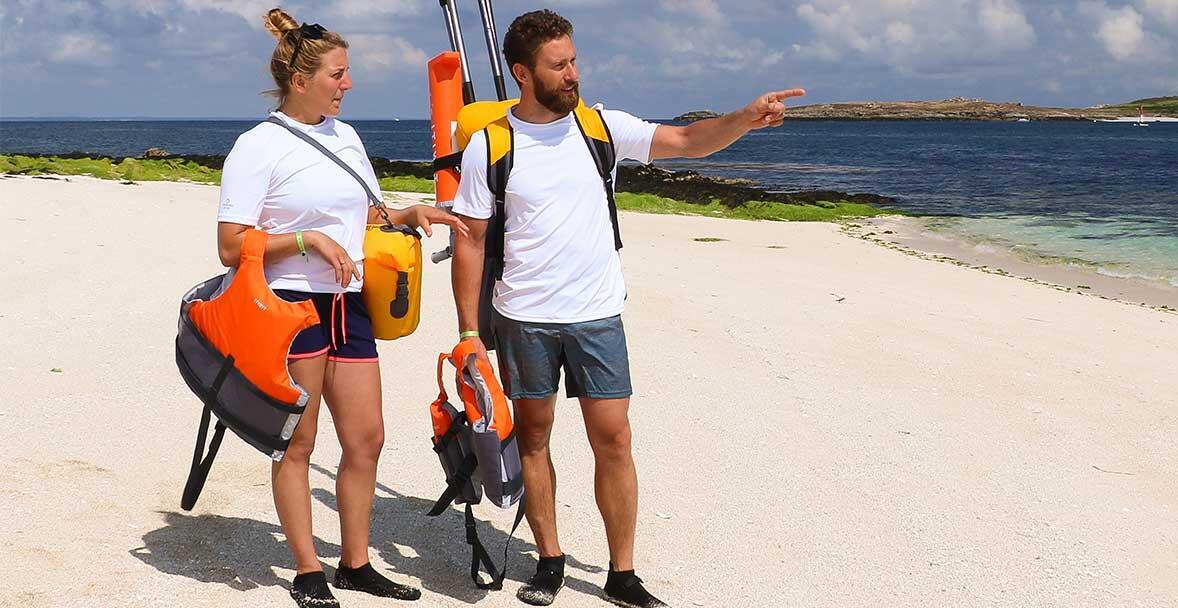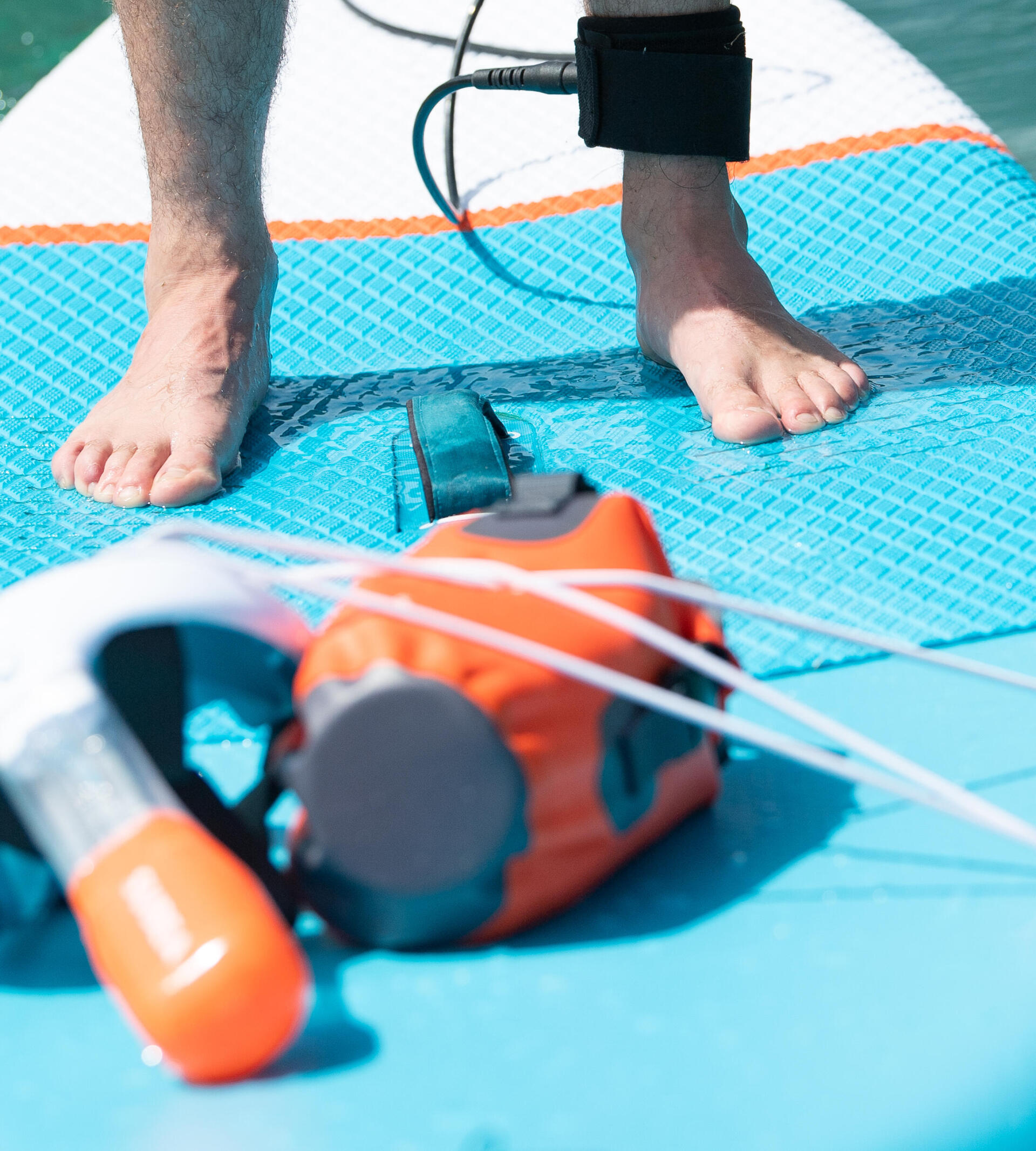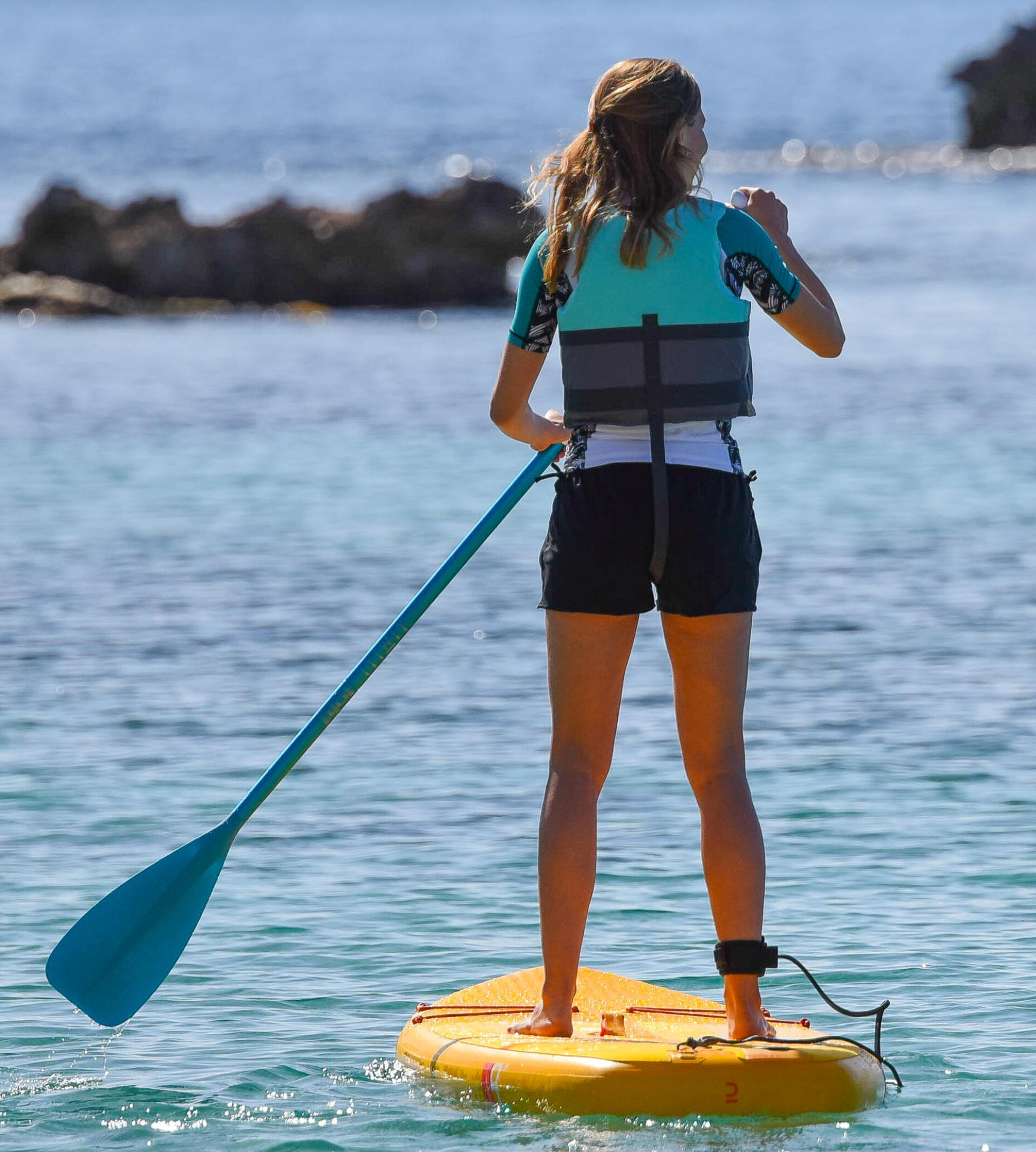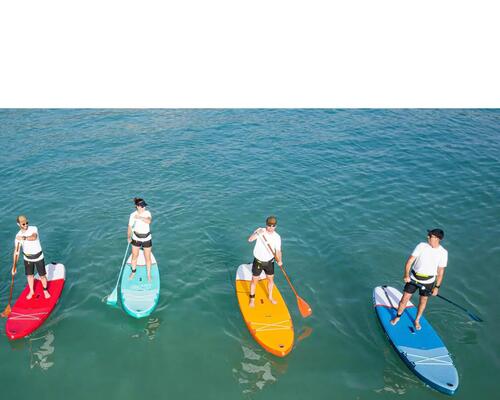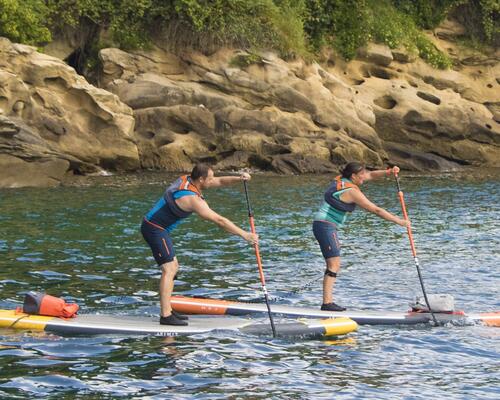How to choose the right stand up paddle to start with?
At first, you will make short trips to a calm water level (lake, river or sea) as you will need stability. You will need a stand up paddle (also called "sup") wide and thick. For easy transportation, you can choose an inflatable board. This type of board fits in a big backpack and can easily enter the trunk of the car. The inflatable technology called "dropstitch" gives excellent rigidity to the board when inflated to the indicated pressure. It's also very shock-resistant and does not hurt if you fall on the board. Always use the foot leash (cord that connects your body to the board) for your safety, even on flat water. For the paddle, a height-adjustable model (for the whole family) in aluminum (solid) will do just fine. If you choose it removable, it will fit in the inflatable sup bag. Finally, do not forget a buoyancy aid if you are not comfortable in the water.


